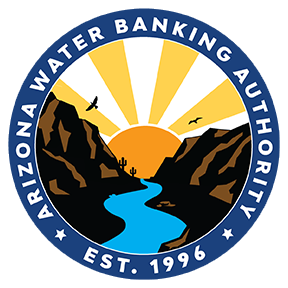Announcements
2022 Tier One Shortage
The U.S. Secretary of the Interior has declared the first-ever Tier 1 shortage for Colorado River operations in 2022.
This Tier 1 shortage will result in a substantial cut to Arizona’s share of the Colorado River – about 30% of Central Arizona Project’s normal supply; nearly 18% of Arizona’s total Colorado River supply.
2021 Joint Recovery Planning Update
The 2021 Joint Update is a collaborative effort among the AWBA, ADWR, CAP, RPAG and stakeholders to advance recovery planning. This Joint Update builds on previous planning efforts in the 2014 Plan, further discusses Independent Recovery concepts intended to increase flexibility and fully utilize existing infrastructure, includes an analysis of recovery capacity requirements focused on impacts to direct uses, and identifies future activities and commitments.
2020 Annual Report
In 2020, the AWBA > recharged approximately 60,000 acre-feet in the Phoenix, Pinal and Tucson Active Management Areas,
> purchased 27,080 acre-feet of LTSCs and 6,390 AF of Intentionally Created Surplus (ICS) credits under its agreement with the Gila River Indian Community.
Cumulatively, the AWBA has accrued or acquired 4.36 million acre-feet (MAF) of LTSCs, 3.75 MAF are for Arizona uses and 0.61 MAF are interstate credits stored on behalf of the State of Nevada.
Topics
Recovery Planning
The Arizona Water Banking Authority coordinates with ADWR and CAWCD, working cooperatively to ensure recovery implementation is achievable when needed.
Interactive Map
This interactive GIS map allows you to view AWBA credits at each storage facility and download the full data into excel.
AWBA LONG-TERM Storage Credits https://waterbank.az.gov/ltsc-map
Water Bank Timeline
The Water Bank was created in 1996 to store the unused portion of Arizona's Colorado River entitlement.











No comments:
Post a Comment